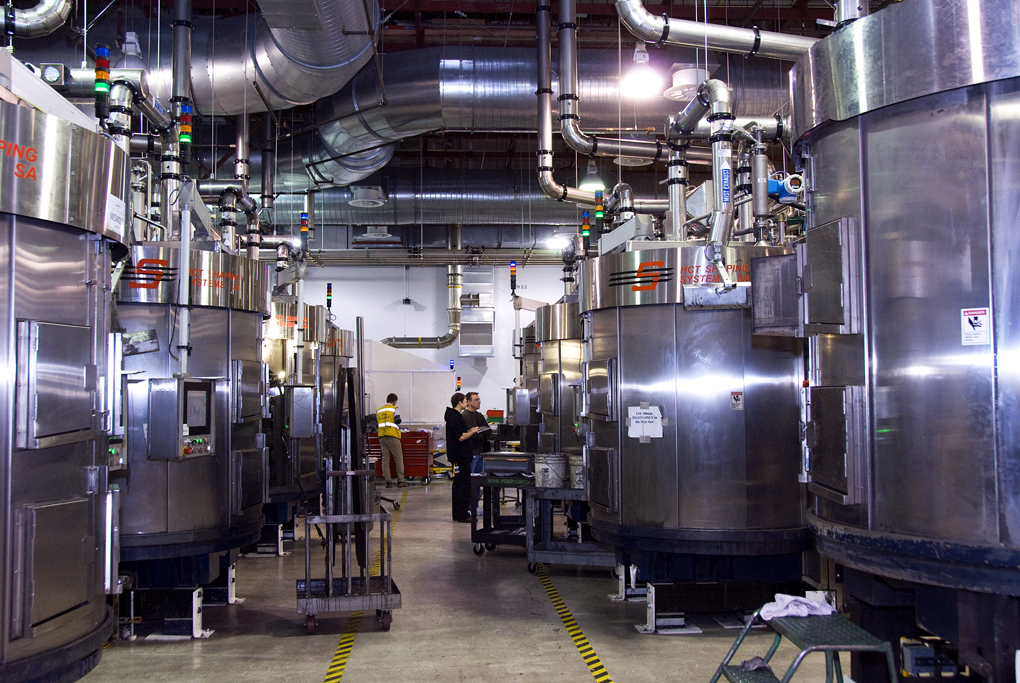Key Difference – Fabrication vs Manufacturing
The process of production or construction has two industrial terms: fabrication and manufacturing. Manufacturing refers to the process of creating products on a large scale using machinery, while fabrication is the process of assembling various standardized parts to create a product. The main distinction between fabrication and manufacturing is that the former involves assembling standardized parts, whereas the latter involves building a product from the ground up.
Key Takeaways
- Manufacturing involves large scale production using labor, machines, tools, and/or chemical or biological processing
- Fabrication always involves the process of assembling
- Manufacturing focuses on converting raw materials into finished products, whereas fabrication involves constructing products by combining diverse, typically standardized parts
What Does Manufacturing Mean?
Manufacturing is the process of transforming raw materials into a finished product through large-scale industrial operations. According to the Merriam-Webster dictionary, the verb “manufacture” is defined as “the process of making wares by hand or by machinery, especially when carried on systematically with the division of labor.” Oxford dictionary defines “manufacture” as “make (something) on a large scale using machinery.” As these definitions suggest, manufacturing involves large-scale production using labor, machines, tools, and/or chemical or biological processing. Examples of products that go through the manufacturing process include household appliances, automobiles, and aircraft.
The manufacturing process consists of the steps that raw materials must undergo before being converted into the final product. In its earliest form, manufacturing only involved a skilled craftsperson and their assistants. However, following the industrial revolution, manufacturing became a large-scale industry.
What Does Fabrication Mean?
The noun “fabrication” is derived from the verb “fabricate,” which refers to the process of constructing products by combining diverse, typically standardized parts. The Oxford Dictionary defines the verb “fabricate” as “construct or manufacture (an industrial product), especially from prepared components,” while Merriam-Webster defines it as “to construct from diverse and usually standardized parts.” Thus, the concept of fabrication always involves the process of assembling. An example of the process of fabrication is the fabrication of a boat by assembling standard components.
To clarify the difference between fabrication and manufacturing, consider a company that imports automobile parts for Volkswagen cars and assembles them to create finished Volkswagen cars. This factory’s process is considered fabrication because they do not manufacture the cars from the ground up. In contrast, factories that construct automobile parts from raw materials engage in the manufacturing process.
It is essential to note that the term “fabrication” is used to refer to various processes, such as metal fabrication, which involves making metal structures by cutting, bending, and assembling.
What is the difference between Fabrication and Manufacturing?
Fabrication vs Manufacturing
Fabrication is the process of constructing products by combining diverse, typically standardized parts, while manufacturing is the process of converting raw materials into a finished product through large-scale industrial operations.
Verb
Fabrication is derived from the verb “fabricate,” while manufacturing is derived from the verb “manufacture.”
Process
In fabrication, standard parts are assembled to build the final product, while in manufacturing, raw materials are converted into the final product.
Summary – Fabrication vs Manufacturing
Fabrication and manufacturing are two mechanical processes involved in producing merchandise. Fabrication is the process of constructing products by combining diverse, typically standardized parts. Manufacturing is the process of converting raw materials into a finished product through large-scale industrial operations. This is the main difference between fabrication and manufacturing.
Image Courtesy:
1. “Solar wafer manufacturing (3347740790)” By Oregon Department of Transportation – Solar wafer manufacturingUploaded by Smallman12q (CC BY 2.0) via Commons Wikimedia
2. “Geely assembly line in Beilun, Ningbo” By Siyuwj – Own work (CC BY-SA 3.0) via Commons Wikimedia
